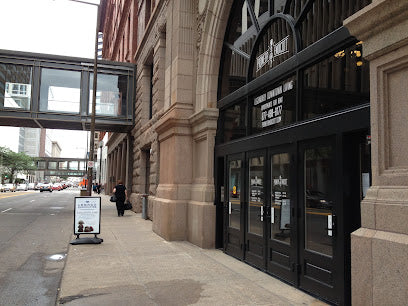Cultivation, consumption, and cultural use of cacao were extensive in Mesoamerica where the cacao tree is native, and cocoa beans became a very important and valuable commodity. The Mayans and Aztecs used them as money, and were very protective of their beans. They paid for food, clothes, taxes, gifts, and offerings to their gods using cocoa beans. Having a pocket full of beans was like having a wallet full of cash. As far as these Mesoamericans were concerned, money really did grow on trees. Below are some interesting facts we’ve learned about these civilizations and their obsession with cacao.
- The first people to harvest chocolate were the Mokaya and other pre-Olmec peoples who lived in southeast Mexico (Mesoamerica) around 1000 B.C. The word “chocolate” is derived from the Mayan word “xocolatl”, or “bitter water,” being that it was originally consumed as a liquid beverage.
- In Mayan civilization cacao beans were the currency, and counterfeiting cacao beans out of painted clay had become a thriving industry. Goods could be priced in units of cacao: a slave cost 100 beans, the services of a prostitute cost 10 beans, and a turkey cost 20 beans. While the Spanish conquistadors horded gold, the Mesoamericans horded cacao beans. In some parts of Latin America, the beans were used as a currency as late as the 19th century.
- Columbus’s son Ferdinand recorded that when the Mayans dropped some cacao beans “they all stopped to pick it up, as though an eye had fallen.” Columbus, who was searching for a route to India did not see the potential of the cacao market and mistook them for shriveled almonds.
- The Aztecs believed that cacao seeds were the gift of Quetzalcoatl, the god of wisdom, and the seeds once had so much value that the Aztecs also used them as a form of currency.
- Motecuhzoma Xocoyotzin (Montezuma II), the 9th emperor of the Aztecs was one of the most wealthy and powerful men in the world. He was also known as “The Chocolate King”. At the height of his power he had a stash of nearly a billion cacao beans.
- According to Aztec legend, the god Quetzalcoatl brought cacao to earth but was cast out of heaven for giving it to humans. As he fled, he vowed to return one day as a “fair-skinned bearded man to save the earth.”
- A drawing from the Mayan Madrid Codex shows gods piercing their ears and sprinkling their blood over the cacao harvest, indicating a strong association between blood and cacao in Meso-American tradition.
- In the ancient Mayan civilization humans were often sacrificed to guarantee a good cacao harvest. First, the prisoner was forced to drink a cup of chocolate, which sometimes was spiked with blood because the Maya believed it would convert the victim’s heart into a cacao pod.
- Mayans used chocolate in baptisms and in marriage ceremonies. It was also sometimes used in the place of blood during ceremonies. Mayan emperors were often buried with jars of chocolate by their side.
- By 1400 AD, the Mayan power was decreasing. The Aztecs ruled over the highlands of central Mexico, far from the rainforests of the Mayans. Since the Aztecs could not grow their own cocoa, they had to trade to get the beans. The Aztecs also had their own word for chocolate: chocolatl, which was very similar to the Mayan word xocolatl. All of the areas that were conquered by the Aztecs that grew cacao beans were ordered to pay them as a tax, or as the Aztecs called it, a "tribute".
- Unlike the Maya of Yucatán, the Aztecs drank chocolate cold. It was consumed for a variety of purposes, from an aphrodisiac or treat for men after banquets to being included in the rations of Aztec soldiers.
As deep (and at times gruesome) as chocolate’s origins were, today this “food of the gods” is thought of as a satisfying treat, health food, stress reliever, natural brain stimulant, symbol of love and affection, and more. Over 50% of adults in America prefer the taste of chocolate over any other flavors. This feel good superfood is now available across the globe. Stop by our local Legacy Chocolates Café in downtown Saint Paul to try some today, or have us ship to you. Our online store is open 24/7. This tree-grown commodity is definitely far more tasty than our current form of money.





